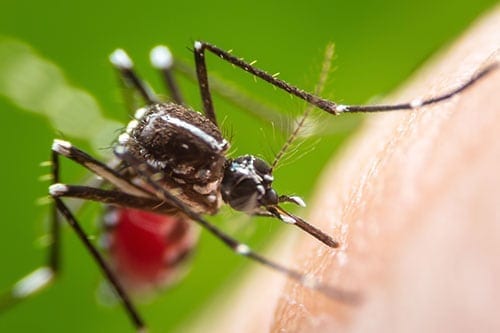Summer is almost at an end but it is always worthwhile to add a few recommendations to your summer care list. Remember, as this is being written, the average temperature in Dallas is still 96 and Phoenix is still 106 degrees. Heat waves continue around the country with forest fires already a high priority. Let’s look at some additional common sense summer tips and tricks to help your summer end on a high note:
Your Feet
Your feet should be well cared for throughout the year but summer has its own specific concerns. It is very easy to get in the habit of throwing on a pair of flip flops during the summer heat. Wearing flip flops can lead to injury of the feet based on the flimsy nature of this kind of shoe. “Any shoe that can easily be bent in half is not supportive enough for your feet”. Add all the other possible complications found with diabetes like ulcers, neuropathy, fungus and Athlete’s foot – you should realize these are just not an option. With diabetes, the only occasion to wear flip flops is in a public/community shower.
Summer heat leads to heavy foot perspiration which causes more nail fungus and Athlete’s foot. Try to wear breathable shoe fabrics including leather and canvas and avoid synthetics like plastic. Yes, they are more expensive but well worth the price when you have diabetes and potential foot complications. Always wear a natural fiber sock such as a cotton blend to keep feet dryer and safe. You want the sock to wick away the perspiration. Swim time always requires pool shoes to protect the bottom of your feet. Never walk barefoot for any reason. They are usually on sale by August, so take advantage. Remove your pool shoes after leaving the water and dry your feet especially between the toes.
Apply sunscreen to the tops of your feet which is very often a site of sunburn. Keep feet covered to remain safe from hot sand, pieces of glass, shells, splintered drift wood or metal nails. Feet should be washed, cleaned and moisturized daily with simple white, non- fragrance cream or lotion and nails should be trimmed straight across. Be aware of swelling, blisters or open wounds. Blood sugars will soar when you have a foot infection and if blood sugars are elevated, you will not heal. Always consult a podiatrist and do not self- treat an injury to the feet when you have diabetes. If you accidently step on a metal or foreign object, make sure your tetanus shot has been updated.
Possible Swimming Dangers
Summer is for fun, relaxation and lots of water sports. The best way to prevent problems with water is be prepared. Make sure water skis, scuba equipment and fishing gear is checked out and ready to go. Swimming requires a skill set and if you feel nervous in the water, it is a good idea to brush up with a few swimming lessons. Ocean swimming demands additional precautions. Understand what rip currents are and how to handle them if you run into a situation. Even strong swimmers can be caught off guard. It is best to swim with the current although your instinct would make you feel differently. Check beach flags which post water conditions and help make you aware of sea dangers. Always swim at a beach that has a lifeguard. Know your abilities and consider taking a basic lifesaving course such as first aid or CPR. Look for signs or colored flags stating there are jelly fish or sea lice in the water. Having diabetes makes it more difficult to heal from any bites and bites from jelly fish or sea lice can cause inflammation and may raise blood sugars.
Jellyfish are found in every ocean and may swim on the surface or swim down below. Most jellyfish bites can be treated simply. Remove the tenticle, rinse with vinegar or baking soda paste, apply ice packs and put on calamine or lidocaine ointment or cream. If you are still uncomfortable try an oral pain reliever. If the swelling does not go down or it does not seem like a routine sting, consult a physician.
Sea lice are “larvae of thimble jellyfish” found mostly in warm waters especially from April- August. Sea lice can get stuck in your hair or between you are your bathing suit. An itching and acne type rash appears 4-6 hours later and symptoms of sea lice may continue for 2 days – 2 weeks. Remedies include bathing in colloidal oatmeal, using hydrocortisone cream and applying calamine lotion. More serious symptoms which will require a physician visit are fever, muscle spasms, weakness, nausea and vomiting. Another common summer water problem is pool bacteria. Known as “Cryptosporidium” or “Crypto” has been on the rise in the last few years at public pools and water parks. The most common symptom is diarrhea which can often lead to dehydration and elevated blood sugars. A case of pool bacteria can also present as skin rashes or ear and eye infections. Open body wounds are prone to developing “Crypto”. Rinsing off in the shower is one of the best ways to prevent carrying bacteria into the pool. Frequent diaper changes are important for the little ones to help prevent pool bacteria. Try to never swallow pool water. Some people are more comfortable wearing nose clips and goggles in a public or community pool. Chlorine treats many problems but does not easily kill “Crypto”.
West Nile virus, Zika and Lyme Disease
These things sound like they are from a scary movie but unfortunately, they are here and more prevalent during the summer. Look for standing puddles, excess water in flower pots, decorative fountains, gutters, and outdoor pet water bowls. Wear long sleeves and long pants when gardening outdoors and use insect repellant that is EPA approved. It should contain DEET or oil of eucalyptus. Avoid wearing heavy perfumes especially floral scents. Wear light colored clothing since stinging insects are more attracted to dark clothing. West Nile virus is from mosquitoes and is mostly seen in the southwest region. Most people have no symptoms but others may suffer from neurologic disease.

Lyme disease is a problematic condition and is often misdiagnosed or under diagnosed. It is found in heavily wooded areas as well as in the New England, Tristate and upper eastern seaboard region and is caused by black legged ticks. If untreated, Lyme disease can go to the heart muscle, joints and nervous system. It can become a long-term condition. Symptoms include fever, rash, chills, swollen lymph nodes and joint/muscle aches. Prevention consists of immediate tick removal, insect repellant and wearing full clothes including a hat when outside.
Bug bites, including red ants, wasps, spiders and bees, can cause a problem especially if you are allergic to these insects. Simple bug bites require an antihistamine for hives and small area swelling. Ice cubes can be placed directly on bug bites to relieve pain, swelling and itching. More severe problems may occur for some. Look for large, painful hives, severe itchiness, swelling in the face, tongue or throat, chest tightness or dizziness. Make sure to visit an ER if these things occur for further treatment.
Be Alert for Hypoglycemia
Working in the garden, being extra active or staying outdoors for long periods of time can lead to hypoglycemia. People often forget or do not make the time to eat or drink. Recognize the signs and symptoms including weakness, confusion, sweating, nausea, visual disturbances and shakiness. These signs resemble heat stroke so it is important to differentiate which situation you are experiencing. Check blood sugars more frequently to see if your blood sugars are 60-80 or below 60. You would treat numbers below 60 more aggressively. Be prepared with glucose tablets or gel and a snack to follow. A simple snack such as a peach with a handful of nuts or a cube of cheese with 2 whole grain crackers should be eaten after the original source of glucose tablets. For heat stroke, go inside immediately to cool down. Take a cool/tepid bath or shower and drink water to correct dehydration. Again, if symptoms do not resolve, see a medical professional. During the summer, your blood vessels expand more quickly when exercising which may increase the chance of hypoglycemia when on insulin.
Traveling
People generally travel up until Labor Day so August is a very active travel month. Remember to be prepared with a week’s worth of extra supplies and medications when traveling domestically and 2 weeks worth of supplies and medications when traveling abroad. If you take insulin, talk to your CDE or physician about time zone changes and insulin shots. Insulin will become ineffective when it remains in 80 plus degree weather. Carry all of your important things such as medications, vitamins, blood glucose monitor and strips, syringes, batteries, pump supplies, glucose tablets and a snack with you on the plane, train, bus or car. This protects your things from heat and getting lost. When you are type 1 and traveling, include a glucagon kit for hypoglycemia. Insulin should be carried in an insulated bag and not directly touching the ice source. Carry your insurance card and consider getting extra trip insurance and cancellation insurance especially when traveling abroad. Wear medical ID and have a written list of all your medications, allergies, medical conditions, surgeries, MD names and phone numbers and stent /valve cards available. Insulin pumps can be affected when the temperature reaches into the 100 degree range and will require a cooling device to cover it.
Summer should be a fun and easy time. With a small amount of information and preparation you can stay safe, happy and healthy through the rest of this summer. Fall will be here soon enough!
Have a question or comment? Then post below, no registration required. I would love to hear from you!
NOTE: Consult your Doctor first to make sure my recommendations fit your special health needs.







Leave A Comment